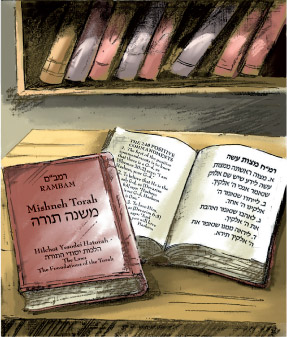Traditionally, this passage was viewed as extremely sensitive, and in theory, the law did not allow it to be taught explicitly at all. the only way to learn it properly was if a disciple had enough knowledge and wisdom to be able to interpret his teacher’s hints by himself, in which case the teacher was allowed to teach it indirectly. in practice, however, the mass of detailed rabbinic writings on this subject often crossed the line from hint to detailed teachings.
After justifying this “crossing of the line” from hints to direct instruction, Rambam explains the basic mystical concepts via the Biblical terms – referring to Spheres, Elements, and Intelligences. in these chapters, however, there is still very little in terms of direct explanation.
This is followed by an analysis of the moral aspects of the universe. Rambam deals with the problem of evil (for which people are responsible because of free will), trials and tests (especially those of iyov and Akeidat Yitzchak) as well as other aspects traditionally attached to God, such as providence and Omniscience.
Rambam then explains his views on the reasons for the 613 Mitzvot, the 613 laws contained in the Torah. He divides these laws into 14 sections – as in his Mishne Torah. However, here he departs from traditional rabbinic explanations in favor of a more physical/pragmatic approach.
Rambam concludes the work with a description of the perfect and harmonious life, founded on the correct worship of God.
